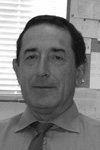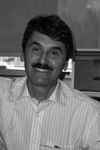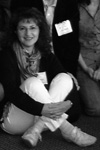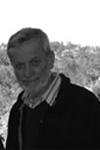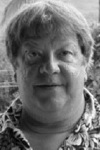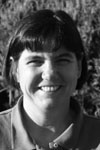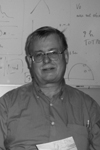principles of fluorescence techniques
september 14-17, 2009 | madrid, spain
Prof. A. Ulises Acuña | Consejo Superior de Investigaciones Científicas | Instituto de Química Física | 119 Serrano | E-28006 Madrid | Spain | Tel: +34 (1) 561 9400 | roculises@iqfr.csic.es
Dr. Acuña graduated in Chemistry from the University of Santiago (Spain) in 1966 and received his doctoral degree from the University Complutense of Madrid in 1970. Since 1972 he has held a permanent position at the Institute of Physical Chemistry (C.S.I.C., Madrid) where he created the Department of Biophysics (1989) and served as Director (1992-1993). He was educated in time-resolved spectroscopic methods by Prof. D. Husain and Dr. J. R. Wiesefeld at the Physical Chemistry Department of Cambridge University (U.K.), in biological applications of fluorescence by Prof. J. Yguerabide (University of San Diego, La Jolla, U.S.A.), and in emission anisotropy by Prof. K. Razi Naqvi from the Physics Department of Trondheim University (Norway).
Areas of interest. Elementary processes in photophysics and laser spectroscopy. Photochemistry of bacteriorhodopsin. Protein luminescence and molecular hydrodynamics. Fluorescent probes for lipid bilayers and cell membranes. Design and synthesis of fluorescent labels for biomedical applications. Plant fluorophores in the history of fluorescence.
Dr. Beniamino Barbieri | ISS, Inc. | President | 1602 Newton Dr. | Champaign, IL 61822 | USA | Tel: 217-359-8681 | beniamino.barbieri@iss.com
Dr. Valeria Caiolfa | CNIC | Microscopy and Dynamic Imaging | Melchor Fernández Almagro, 3 | E-28029 Madrid | Spain | Tel: +34 (91) 4531323/9; ext:2206-2207 | vcaiolfa@cnic.es
Valeria R. Caiolfa was born in Italy and received her doctorate degree in Chemistry from Ben Gurion University in Israel. She is a group leader at the Molecular Oncology Department of the San Raffaele Research Institute in Milan, Italy. Since 2008 she has been coordinating the activities of the Microscopy and Dynamic Imaging Unit at the CNIC (Fundación Centro Nacional de Investigaciones Cardiovasculares Carlos III) in Madrid, Spain.
Dr. Caiolfa's research interests are in the area of membrane receptors and cell signaling in carcinogenesis. Her current projects on GPI-anchored proteins, growth factor receptors and cytoskeleton adaptors involve the use of TIRF imaging and two-photon microscopy including FCS, PCH/N&B and FLIM for studying the protein dynamics and the signaling of multi-molecular complexes in real-time and in live cells.
Dr. Susana Sánchez Donoso | Facultad de Ciencias Químicas | Departmento de Polimeros | Universidad de Concepción | Concepción, Chile | susanchez@udec.cl
Susana Sánchez was born in Chile and received her doctorate degree in Chemistry from the Catholic University of Valparaiso. In 1997, she joined the Laboratory for Fluorescence Dynamics (LFD) at the University of Illinois at Urbana-Champaign as a post doctoral fellow and become the User Coordinator in 2001. In 2006 she moved with the LFD to the University of California at Irvine as an Independent Researcher and the User Coordinator of the LFD. Since 2013 she has been an Assistant Professor at the University of Concepción in Chile at the Polymers Department. She teaches Basic Chemistry, Biopolymers and Biological Chemstry. Dr. Sánchez's research interests are in the area of protein-protein and protein-lipid interactions. Her current projects involve the study of the role of membrane fluidity on the cholesterol removal by HDL particles from artificial systems and cells.
Prof. Enrico Gratton | University of California, Irvine | Department of Biomedical Engineering | Irvine, CA 92697-2715 | USA | Tel: 949-824-2674 | egratton22@yahoo.com
Enrico Gratton was born in Merate (Como) Italy. He received his doctorate degree in physics from the University of Rome in 1969. From 1969 to 1971 he was a post-doctoral fellow at the Istituto Superiore di Sanità in Italy. He went to the University of Illinois at Urbana-Champaign (UIUC) in 1976 and began his work as a research associate in the Department of Biochemistry. In 1978 he was appointed assistant professor in the Department of Physics at UIUC. In 1989 he was promoted to professor. Dr. Gratton's laboratory has reached international recognition for the development of instrumentation for time-resolved fluorescence spectroscopy using frequency domain methods.
In 1986 Dr. Gratton was awarded a grant from the National Institutes of Health, National Center for Research Resources, to establish the first national facility dedicated to fluorescence spectroscopy: the Laboratory for Fluorescence Dynamics (LFD). In 2006 the entire LFD laboratory moved to its current location at the new Natural Sciences II building at the University of California, Irvine. Dr. Gratton remains Principal Investigator of the LFD and holds joint appointments as Professor in the UCI departments of Biomedical Engineering and Physics and in the College of Medicine. The facility is a state-of-the-art fluorescence laboratory for use by local, national, and international scientists. It has a dual and equal commitment to research and development of fluorescence instrumentation and theory and to service in a user-oriented facility. Dr. Gratton's research interests are varied and many; they include design of new fluorescence instruments, protein dynamics, hydration of proteins, and I.R. spectroscopy of biological substances. Dr. Gratton has authored or co-authored over 400 publications in refereed scientific journals.
Prof. David M. Jameson | University of Hawaii at Manoa | Department of Cell and Molecular Biology | John A. Burns School of Medicine | Honolulu, HI 96822 | USA | Tel: 808-956-5034 | Website | djameson@hawaii.edu
A student of the late Prof. Gregorio Weber, David Jameson is Full Professor in the Department of Cell and Molecular Biology at the University of Hawaii. Prof. Jameson's research interests are focused on the development and application of time-resolved and steady-state fluorescence methodologies to elucidate dynamic aspects of biomolecules, including proteins, nucleic acids and membrane systems.
Currently, his laboratory is investigating several protein systems, including dynamin, a large (98kDa) GTPase which functions to "pinch-off" membrane vesicles in pathways such as receptor mediated endocytosis and synaptic vesicle recycling. This research involves both in vitro and in vivo studies on the self-association modes of dynamin as well as its interaction with membranes and other proteins such as endophilin and Arc. His lab also has a project on Botulinum Neurotoxin funded by Allergan, Inc. This project involves biophysical studies on proteins forming the neurotoxin complex as well as development of in vitro and in vivo toxin assays based on fluorescence fluctuation spectroscopy.
Author of more than 130 peer-reviewed articles, Prof. Jameson regularly reviews grants for the American Heart Association, the National Institutes of Health and the National Science Foundation. His research has been supported by grants from the National Institutes of Health, the National Science Foundation and the American Heart Association.
Prof. Don Lamb | Ludwig-Maximilians-Universität München | Lehrstuhl für Physikalische Chemie I | Butenandtstr. 11 | D-81377 München | Germany | Tel: 089/2180-77564 | don.lamb@cup.uni-muenchen.de
Prof. Don C. Lamb has been working in the Department of Physical Chemistry, Ludwig-Maximilians-University in Munich, Germany, since 2003, being promoted to a full professor in Dec. 2007. He is also a full member of the Center for Nanoscience (CeNS) and Bioimaging Network (BIN) in Munich, Germany.
Prof. Don C. Lamb received his doctorate degree in Physics from the University of Illinois at Urbana-Champaign (UIUC) in 1993. Afterwards, he worked in several renown Universities in the US. and Germany.
Currently, Prof. Lamb's research areas are, among others, fluorescence and single molecule methods to investigate the dynamics and functions of biomolecules. He is interested in developing and improving ultrasensitive fluorescence methods, performing quantitative analyses and applying these methods to investigate biological systems.
Prof. Catherine Royer | CNRS | Centre de Biochimie Structurale | 29, route de Navacelles | 34090 Montpellier CEDEX | France | Tel: +33-04 67 41 79 02 | catherine.royer@cbs.cnrs.fr
Catherine Royer is Director of Research at INSERM and Director of the Center for Structural Biochemistry in Montpellier, an INSERM-CNRS-University of Montpellier 1 and 2 mixed research unit. She is a Visiting Professor at the Johns Hopkins University Department of Biophysics and an Elected Fellow of the American Association for the Advancement of Science. Her research interests involve the use of fluorescence spectroscopic methods to characterize structure-function-dynamics relationships in biomolecules.
Dr. Royer obtained her Ph.D. in 1985 in the Department of Biochemistry in the School of Chemical Sciences at the University of Illinois at Urbana-Champaign under the direction of Professor Gregorio Weber. She carried out postdoctoral studies at the University of Paris 7, the CNRS at Gif-sur-Yvette and at LURE under the direction of Bernard Alpert, Guy Hervé and Jean-Claude Brochon. She then took a position as User Coordinator and Research Physicist at the Laboratory for Fluorescence Dynamics in the Department of Physics at the University of Illinois - Urbana Champaign. In 1990 she moved to an Assistant Professorship in the School of Pharmacy at the University of Wisconsin-Madison, where she was promoted to Associate Professor with tenure in 1995. In 1997 she took the position of INSERM Director of Research in the Center for Structural Biochemistry in Montpellier.
Dr. Royer has published extensively in the field of pressure effects on biomolecular structure and interactions and on use of state of the art fluorescence approaches applied to understanding the physical basis for the control of transcription. She has served on numerous review panels (United States National Science Foundation Biophysics Panel, CNRS Section 21, Comité de Programme Biologie LURE, French Agence National pour la Recherche -- Physique et Chimie pour le Vivant) and the councils of national and international biophysical societies.
Prof. Dr. Martin vandeVen | Hasselt University and School of Life Sciences | Transnationale Universiteit Limburg | Biomedical Research Institute | Agoralaan, Bldg. C., | B-3590-Diepenbeek | Belgium | Tel: +31-(0)11-269233/martin.vandeven@uhasselt.be | martin.vandeven@uhasselt.be
Martin vandeVen is a guest professor associated with the Biomedical Research Institute of Hasselt University and the School of Life Sciences, transnational University Limburg. Martin vandeVen obtained his Ph.D. from Utrecht University, The Netherlands in 1983, studying lipid systems using optical methods at the Biophysics department under Prof. Levine. Subsequently, he worked at Leiden University, The Netherlands, in the laboratory of Prof. Duysens on picosecond phenomena in bacterial photosynthetic systems and with Prof. Brand of John Hopkins University on the fluorescence emission from proteins. He then held a research associate position focused on instrumentation development under the guidance of Prof. Gratton at the Laboratory for Fluorescence Dynamics then located at the University of Illinois in Urbana-Champaign and now at the University of California at Irvine. At Hasselt University he continues to research confocal microscopy techniques such as FCS, FRAP and RICS on cells and tissues, auto-immune brain diseases such as multiple sclerosis and interdisciplinary development of diamond-film-based biosensors.

